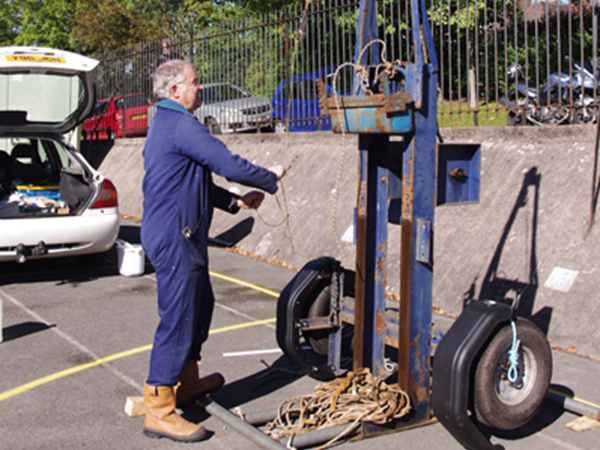For some time, the E&T Committee have been searching for an alternative to the DMM Eco Anchor, which is no longer manufactured. Our preferred option would be to find an exact copy of the Eco Anchor since this retains all of the existing investment in testing, procedures and training as well as recognition of the scheme by users. Having been offered a supply by a UK caver with manufacturing facilities based in China, we believed we had found a source which would be able to provide anchors meeting our specification for the foreseeable future. A prototype batch of anchors indicated performance comparable with the DMM product and so we decided to press ahead with production quantities. Unfortunately, tests on the first production batch indicated problems with the material or manufacturing process. While the forces at which failures occurred were in excess of the limits which are required for anchors complying with the industrial standard for anchors, they are significantly below the safety margin which E+T have previously decided we should aim for.
Cavers may find some background historical and technical information useful at this point. It is generally accepted that the key measure of anchor performance is the axial pull out force. For anchors approved to BS EN 795 (the standard for industrial applications) the axial pull out force is required to be no less than 10kN. For mountaineering anchors (applicable standard BS EN 959) this figure is 15kN. The view of the BCA E+T Committee is that a figure of 25kN is appropriate for anchors placed in caves.
The choice of safety factor for any piece of equipment used for lifting or supporting a load is dependent on a number of factors. These include the expected maximum load, the likely frequency of over-load, the frequency of inspection, the susceptibility of the material to fatigue, the rate of wear and the expected life of the anchor. The higher safety factor chosen by BCA reflects the fact that it is expected that anchors placed in caves will undergo no regular maintenance or inspection in the caving environment and that, because they are used with single static ropes, they may occasionally be subjected to higher forces than those designed for use with dynamic mountaineering rope.
Anchors from the first prototype batch received from China failed at loads of between 25 and 45kN, with the failure mode being directly comparable to the DMM Ecoanchor (i.e. the anchor metalwork elongates and then pulls out of the resin, maintaining a peak force around the E+T’s target value until the tang of the anchor is almost all out of the rock).
Anchors from the first production batch received from China failed at loads of between 14 and 47kN. Furthermore, the mode of failure indicated significant problems with the material/and or heat treatment during manufacture (some of the metalwork actually broke during the tests).
None of the production batch of anchors have been placed in caves but 77 of the prototype anchors have been placed in locations in the Yorkshire Dales. These are located in six caves: Stream Passage Pot, Disappointment Pot and Marylin at Gaping Gill, Roaring Hole and Rowten Pot. They can be identified by the laser-etched marking “BCA01” on the anchor.
It is important to stress that not all anchors in these caves are affected. Precise locations of the anchors, and details of the tests, may be found on the CNCC website. To put the number into context, there are over 5000 Ecoanchors installed in Dales caves.
Although the prototype anchors would appear to meet the BCA E+T performance criteria, the Committee has decided that they should be removed because the results of the tests on the production batch of anchors leave us with a lower degree of confidence in the long term performance of these anchors than is the case for the DMM product. Our intention is that all of these anchors should be decommissioned within two years of a suitable alternative anchor being identified. Work to select and confirm an alternative anchor is already well advanced.
The E+T Committee would like to remind cavers using anchors of any type that no single point of belay should be relied on for applications where a failure of the belay could result in serious injury or death.

